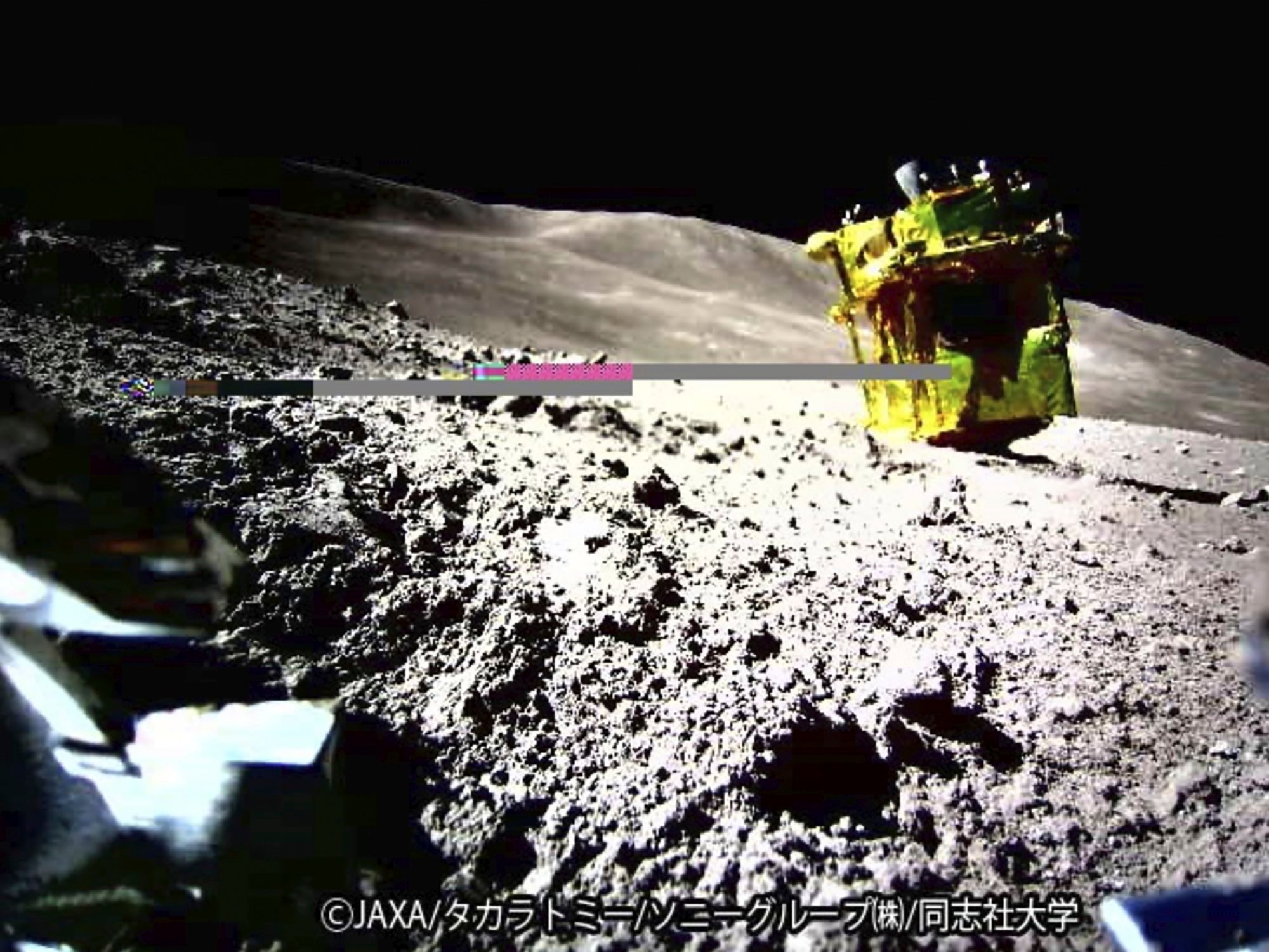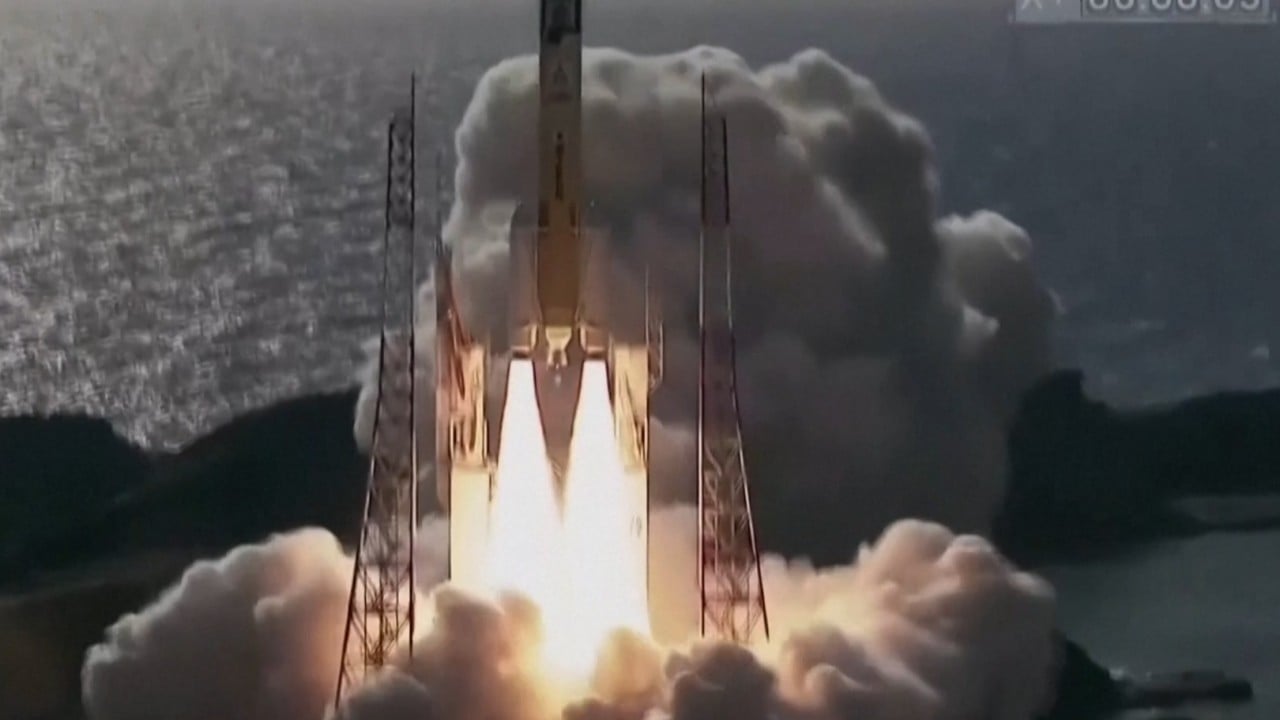Japan aims to put a man on the moon ahead of China as it partners with US in ‘Apollo programme on steroids’
The announcement that the next non-American to walk on the moon is set to be a Japanese during a recent meeting between President Joe Biden and Prime Minister Fumio Kishida signals that Tokyo aims to surpass China’s space ambition.
However, analysts warned that the plan could provoke Beijing into accelerating its lunar projects in a bid to claim a prestigious victory in space over its Asian rival.
Under the plans outlined by Biden and Kishida at the White House on April 10, Japan will work with the US to put an astronaut on the moon in 2028 and a second astronaut in 2032. Both countries are aiming to stick to that schedule to prevent Beijing from scoring a propaganda coup by landing a Chinese astronaut on the moon before 2028, according to analysts.
“Certainly, I expect Beijing to take this as a direct challenge,” said Lance Gatling, president of Nexial Research and an aerospace and defence analyst.
“For years, the Japanese and Chinese have headed opposing space cooperation organisations or networks that sought to corral Asian nations’ space aspirations and both use their accomplishments in space as propaganda,” Gatling told This Week in Asia.

“Chinese experience in manned space is still relatively recent, and it is difficult to say how advanced they are – but placing humans on the moon is a very hazardous undertaking,” he said.
China has been stepping up its efforts to prepare for future lunar missions.
On Thursday, three astronauts lifted off at the Jiuquan Satellite Launch Centre in northwest China and safely docked with the orbiting Tiangong space station. The astronauts are slated to spend six months aboard the space station, conducting experiments and making preparations ahead of a likely manned moon mission.
Beijing plans to send an unmanned lunar probe to the far side of the moon as early as next month and astronauts to land on the lunar surface by 2030, according to Chinese media reports. A basic lunar base jointly developed by China and Russia is also targeted for completion by 2035.
Hundreds of thousands of things must go right for any moon mission to be a success, Gatling said. In the event of a failure – particularly one that involved the loss of crew – it would be “a massive propaganda disaster”, he added.
“But I expect the question to evolve into how the Chinese assess the risks, manage them and decide to proceed.”
The joint Japan-US plan is part of the Artemis lunar exploration programme, which involves several other nations and is designed to serve as a foundation for future space exploration.
Japan has agreed to develop and sustain the operations of a pressurised lunar rover. The US will tap its more extensive experience in manned space missions, provide flight opportunities and astronaut training and “manage the risks of these challenging and inspiring lunar surface missions,” a statement from the White House said.
The two nations plan to jointly explore the use of materials found on the lunar surface, such as water ice at its south pole, which will be critical to sustaining human life during a moon mission.
The agreement also covers collaboration on a Low Earth Orbit detection and tracking constellation for missiles, such as hypersonic glide missiles.
Japan’s bears are coming out of hibernation. And they’re in a ‘bad mood’
Japan’s bears are coming out of hibernation. And they’re in a ‘bad mood’
Gatling said this part of the agreement was “a big deal” as Tokyo was previously opposed to the Japan Space Exploration Agency taking part in any military or defence project.
“The challenge of the importance of the space industry to national economic and security issues, along with the challenge of China, has combined to convince Japan to change its policies and embark on explicitly military space programmes,” he said.
Kazuto Suzuki, a professor of science and technology policy at Tokyo University, said the importance of the White House agreement was mostly symbolic.
“The meeting was all about ritual, but that is done to demonstrate to the rest of the watching world – primarily China – that the US and Japan are all in together, that they are working on AI, semiconductors and space,” he said. “The message is that they are looking to the future and that space and moon exploration is critical to that.
“They are very aware that they are competing with China in exploration of the moon, so this is going to be the Apollo programme on steroids.”
Japan warns of scorching summer as it experiences ‘very worrying’ temperatures
Japan warns of scorching summer as it experiences ‘very worrying’ temperatures
According to Suzuki, the aim of having a Japanese as the first non-American to set foot on the moon “is so that it is not a Chinese astronaut, as that would increase Chinese pride in their space capabilities and make them believe they are equal to the US”.
While China had made good progress in its space projects in recent years, including having an orbiting space station, it was not ready to put an astronaut on the moon any time soon, Suzuki said.
“They know they are still behind, and they are focused on making steady progress with the space station, a probe on the other side of the moon and only then will they look at landing on the surface,” he said.
“An astronaut on the moon is a very tough proposition, and they will not want to risk lives. They still need to build their capacity before they attempt that.”



